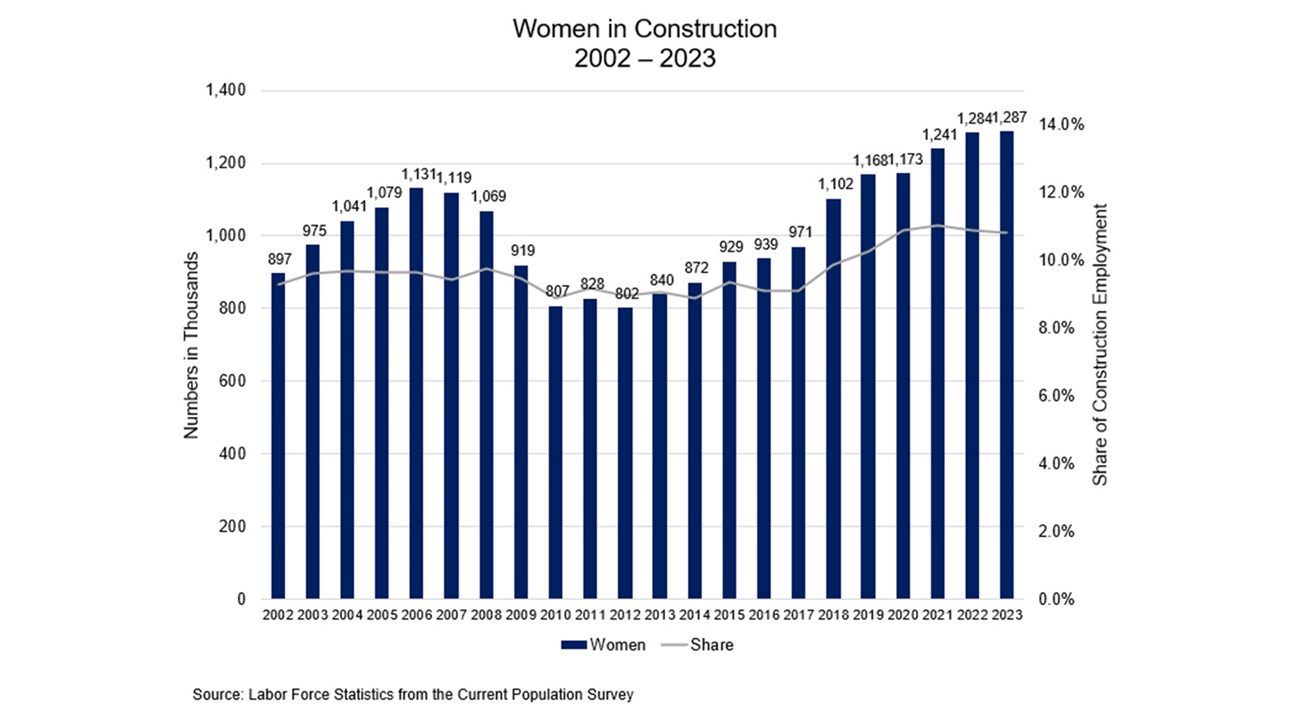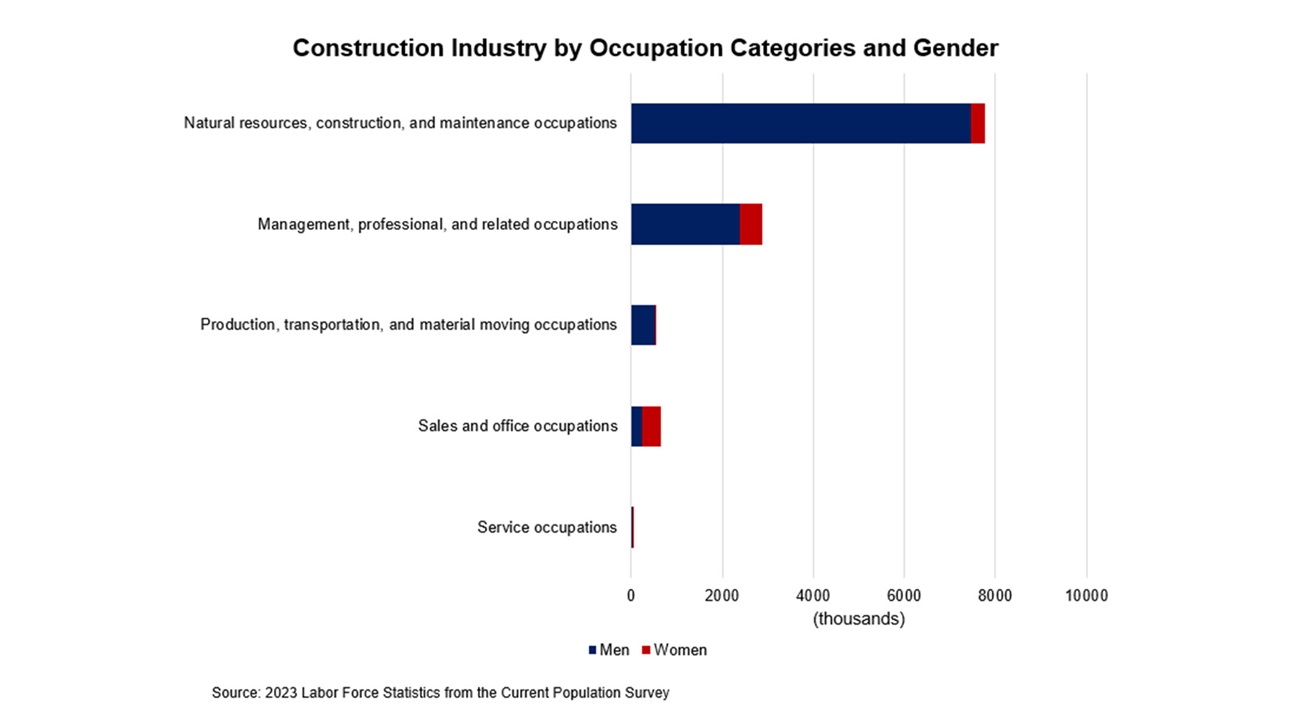Women in Construction Reached Record High in 2023
In 2023, the number of women employed in the construction industry inched up to around 1.3 million. Women now represent 10.8% of the construction workforce, an increase from 9.3% in 2002. As the industry continues to face a shortage of skilled labor, adding new workers is an important goal. Bringing additional women into the construction labor force represents a potential opportunity for the future. This article examines the roles of women in construction using labor force statistics from the Current Population Survey (CPS).
The Great Recession led to a sharp decline in the number of women working in construction, dropping by nearly 30% to 807,000 by 2010. From 2010 to 2017, the number gradually rose to around 970,000 but remained below the peak of pre-recession levels. In recent years, however, there has been significant growth, with women in construction reaching a record of 1.287 million in 2023.

Currently, women make up 10.8% of the construction workforce. According to the CPS data, most women in the construction industry are employed in occupations such as office and administrative support, management, business and financial operations. Sales and office occupations employed the largest number of women within the construction industry. For example, women accounted for 66% of workers in sales and office occupations, including 406,000 women in office and administrative support, and 31,000 in sales and related occupations in 2023. Additionally, about 511,000 women held roles in management, professional and related occupations, though they only accounted for 18% of all management positions.
Although construction and maintenance occupations account for the largest number of employees in construction and is where additional workers are most needed, women comprised only 4% of such occupations. Additional steps should be taken to attract female workers into these high-demand occupations. Other groups such as production, transportation and material moving occupations, and service occupations employed only around 26,000 female workers.

Latest from NAHBNow
Jan 02, 2026
Trump Delays Higher Tariffs on Furniture, Kitchen Cabinets for One YearPresident Trump has announced he will be rolling back higher tariffs on furniture, kitchen cabinets and vanities that were set to go into effect on Jan. 1, 2026, until Jan. 1, 2027.
Jan 02, 2026
FHA’s MMI Fund Capital Ratio Remained Solid in Fiscal Year 2025The capital reserve ratio for the Federal Housing Administration’s Mutual Mortgage Insurance Fund ended the fiscal year at 11.47% — unchanged from the capital ratio for fiscal year 2024 and well above the congressionally mandated 2% capital ratio.
Latest Economic News
Dec 22, 2025
State-Level Employment Situation: September 2025In September 2025, nonfarm payroll employment was largely unchanged across states on a monthly basis, with a limited number of states seeing statistically significant increases or decreases. This reflects generally stable job counts across states despite broader labor market fluctuations. The data were impacted by collection delays due to the federal government shutdown.
Dec 19, 2025
Existing Home Sales Edge Higher in NovemberExisting home sales rose for the third consecutive month in November as lower mortgage rates continued to boost home sales, according to the National Association of Realtors (NAR). However, the increase remained modest as mortgage rates still stayed above 6% while down from recent highs. The weakening job market also weighed on buyer activity.
Dec 18, 2025
Lumber Capacity Lower Midway Through 2025Sawmill production has remained essentially flat over the past two years, according to the Federal Reserve G.17 Industrial Production report. This most recent data release contained an annual revision, which resulted in higher estimates for both production and capacity in U.S. sawmills.
